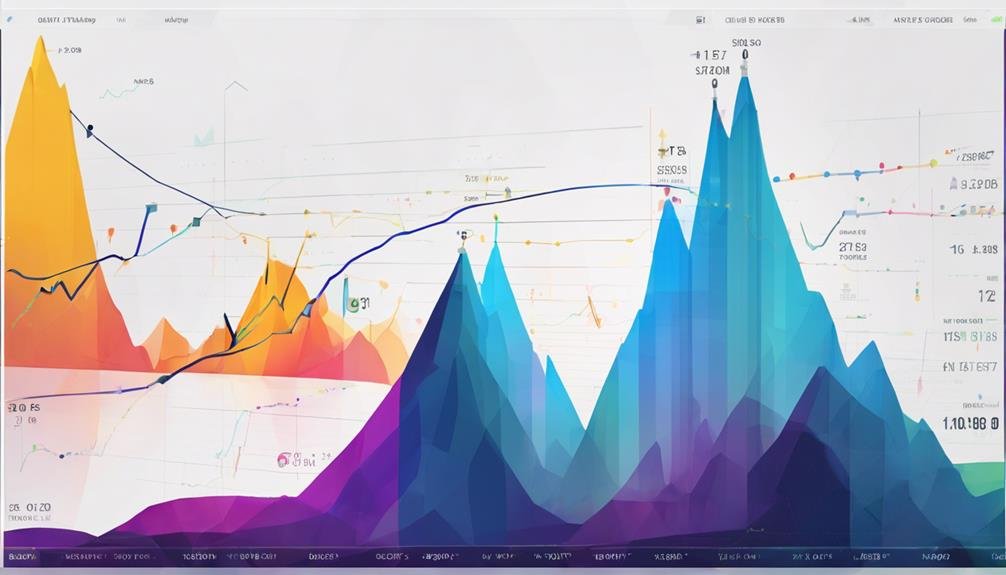Analyzing the historical evolution of the crypto market cap reveals the significance of tracking market trends and fluctuations. The crypto market’s exponential growth, with billions in overall market cap by January 2024, emphasizes the importance of monitoring market trends. Market cap trends reflect digital asset value, aiding in well-informed investment decisions. Bitcoin dominates market cap rankings, while Ethereum is a key player. Fluctuations, influenced by factors like Bitcoin price, offer insights into market development. Market cap data provides vital metrics for understanding the value and size of cryptocurrencies, exposing trends and investor sentiment, subtly hinting at deeper insights awaiting discovery.
Brief Overview of Historical Analysis of Crypto Market Capitalization
- Historical market cap trends show exponential growth since 2010.
- Bitcoin and Ethereum dominate market cap rankings.
- Fluctuations are influenced by factors like price and trading volume.
- Market cap reflects overall market health and investor interest.
- Analyzing market cap data aids in making informed investment decisions.
Evolution of Crypto Market Cap
The evolution of the crypto market capitalization began in 2010 with a minimal total value of all cryptocurrencies, marking the nascent stage of a transformative financial landscape. At that time, the market cap data reflected the infancy of the cryptocurrency market, with values starting at just a few million dollars. However, as time progressed, the market witnessed exponential growth, with the overall cryptocurrency market capitalization surpassing billions of U.S. dollars by January 2024. This surge in market cap signifies a significant expansion in the crypto market, showcasing the increasing investor interest and adoption of cryptocurrencies.
The fluctuating market capitalization, influenced by changing exchange rates and market dynamics, is a valuable indicator of global cryptocurrency market trends. The rising market cap demonstrates cryptocurrencies’ growing acceptance and utilization as alternative investments and financial assets. Understanding the evolution of the crypto market cap is essential for investors and enthusiasts as it provides a guide to market capitalization trends and insights into the current state of the cryptocurrency market.
Impact of Market Cap Trends
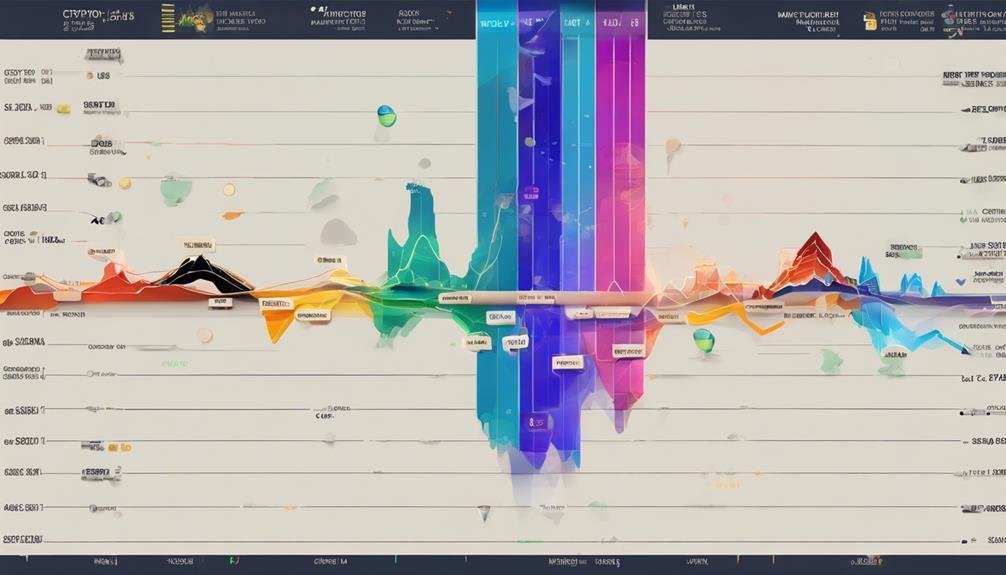
Amidst the dynamic landscape of cryptocurrency markets, market cap trends play a pivotal role in gauging the evolving value and significance of various digital assets. The total market cap of cryptocurrencies reflects the combined market value of all coins in circulation, providing a snapshot of the overall market size. Historical data on market cap trends offers valuable insights into the growth dynamics and investor interest in different cryptocurrencies.
It is important to note that market cap trends can be highly volatile, indicating shifts in investor sentiment and overall market trends. Analyzing these trends is essential for making informed decisions about cryptocurrency investments, as they can help investors understand the relative size and importance of different digital assets in the market. By considering factors such as circulating supply and market capitalization, investors can better assess the risks and rewards associated with various cryptocurrencies, enhancing their investment strategies in the ever-changing crypto landscape.
Historical Market Cap Analysis
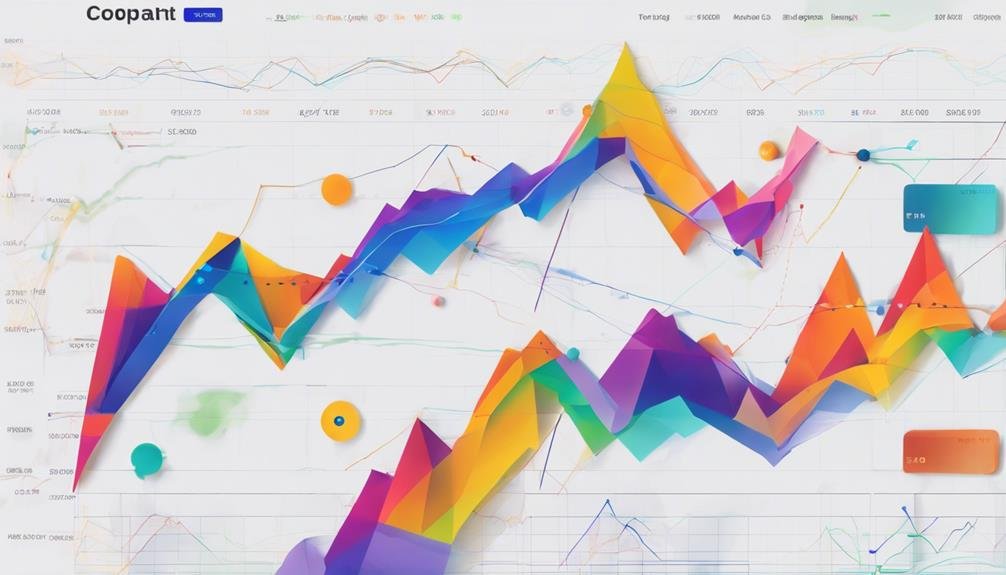
Analyzing historical market cap data provides valuable insights into the evolution and significance of various digital assets within the dynamic cryptocurrency landscape. Market cap measures the total value of circulating coins in the cryptocurrency market, indicating different coins’ relative size and dominance. Bitcoin has consistently maintained its position at the top of the cryptocurrency market capitalization rankings, reflecting its widespread adoption and market value. Ethereum has also been a prominent player in market cap rankings, showcasing its significance in crypto.
Total market cap, which represents the combined value of all cryptocurrencies in circulation, offers a thorough view of the cryptocurrency market’s overall health and growth. Historical market cap analysis allows for observing trends over time, highlighting the market’s fluctuations and emerging new coins with high market caps. Understanding the historical market cap data can provide investors and analysts with valuable insights into the market dynamics and the performance of different digital assets.
Market Cap Fluctuations Over Time
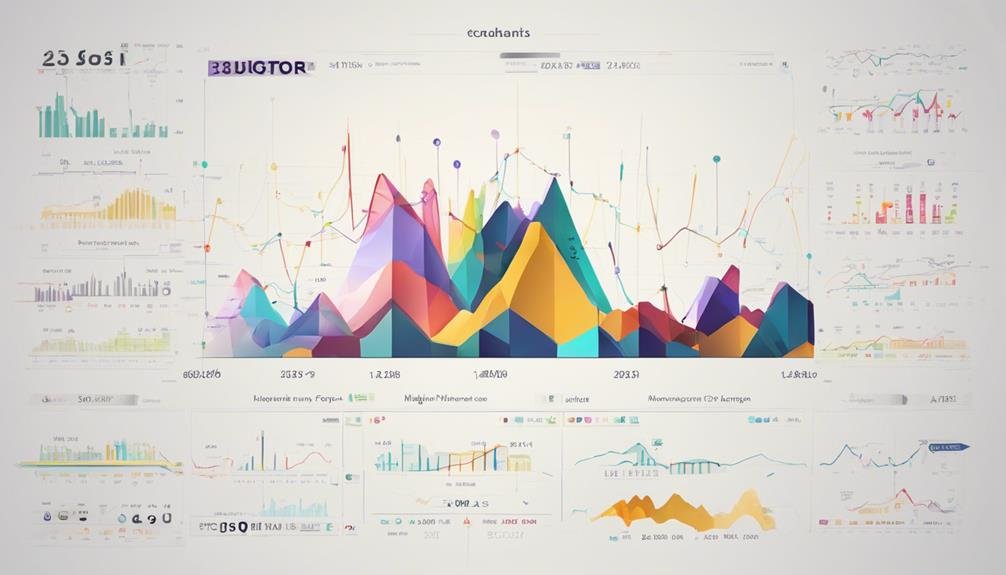
Experiencing notable shifts in value, the cryptocurrency market cap has demonstrated a pattern of significant fluctuations over time. The total market capitalization of the crypto market has grown since Bitcoin emerged in 2009. Market cap fluctuations are influenced by a combination of factors, including the price of Bitcoin, trading volume, and overall market dynamics within the cryptocurrency space. Historical data indicates periods of rapid market cap expansion, often succeeded by corrections and consolidations in the market.
Understanding these fluctuations provides valuable insights into the evolving nature of the crypto market and its development over time. Investor sentiment plays a vital role in driving these fluctuations, with market cap serving as a critical metric for evaluating the overall health and stability of the cryptocurrency market. By analyzing market cap data, one can better understand the underlying market forces shaping the crypto industry.
Key Insights From Market Cap Data
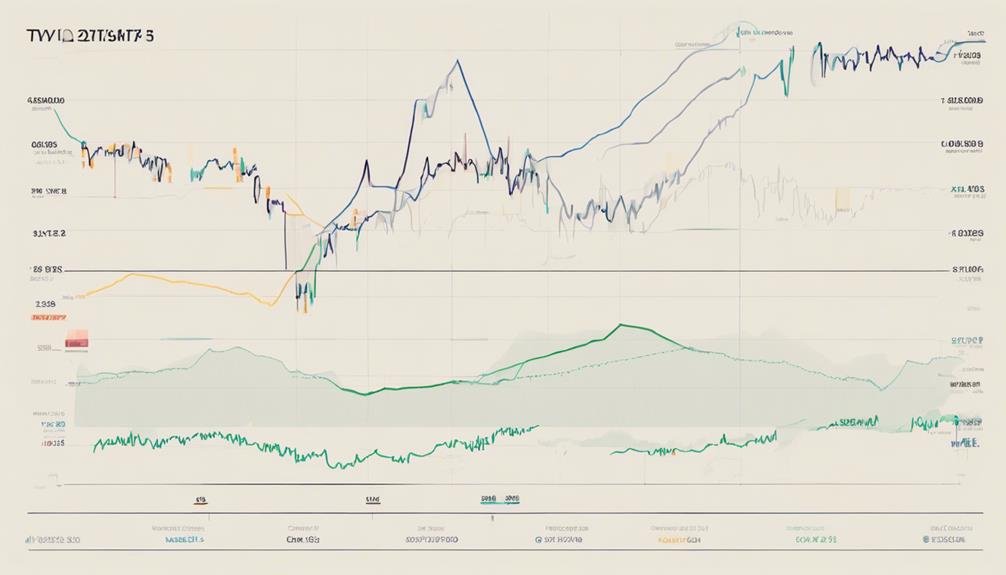
Examining market cap data offers valuable insights into different cryptocurrencies’ size, value, and comparative significance. The market cap serves as a metric for comparing the relative value of various digital assets based on their market capitalization. By understanding market cap data, investors can gauge the significance of individual coins within the broader cryptocurrency landscape. Market cap data reflects the total value of circulating coins, providing a holistic view of the cryptocurrency ecosystem.
Analyzing historical market cap data enables observers to identify trends and understand the dynamics that have shaped the market over time. By tracking changes in market cap values, one can discern patterns, market cycles, and shifts in investor sentiment. These insights are essential for making informed decisions and understanding the cryptocurrency market’s evolution. Ultimately, delving into market cap data reveals valuable information that can guide strategic investment approaches and market analysis.
Frequently Asked Questions
How Do You Analyze Crypto Market Cap?
Analyzing crypto market cap involves evaluating market trends, price fluctuations, investor sentiment, trading volume, and market dominance and conducting comparative analysis. Understanding market cycles, performance, and growth potential is essential for evaluating market capitalization and making informed investment decisions.
How Do I Get Historical Data From Coinmarketcap?
To retrieve historical data from CoinMarketCap, users can select a cryptocurrency, access the ‘Historical Data’ tab, and specify the date range. This data enables analysis of price fluctuations, market trends, and volume changes for informed market research and long-term perspective.
What Does Market Cap Tell You About Crypto?
Market cap in crypto reflects a cryptocurrency’s market dominance, investment potential, and risk assessment. It provides insights into price volatility, market trends, and competition, aiding portfolio diversification and understanding market sentiment, liquidity, and saturation.
Where Can I Find Cryptocurrency Historical Data?
Historical data on cryptocurrency can be sourced from platforms like CoinMarketCap and CoinGecko. It offers insights into price movements, market trends, and historical patterns, aiding in analysis, trading strategies, and predictive modeling through statistical analysis and data visualization.
Conclusion
Overall, analyzing the historical trends of the crypto market cap reveals valuable insights into the growth and volatility of the cryptocurrency market. One interesting statistic is that Bitcoin’s market cap reached an all-time high of over $1 trillion in 2021, indicating its dominance in the market. Understanding the fluctuations in market cap over time can help investors make informed decisions and navigate the ever-changing landscape of the crypto market with more confidence.
